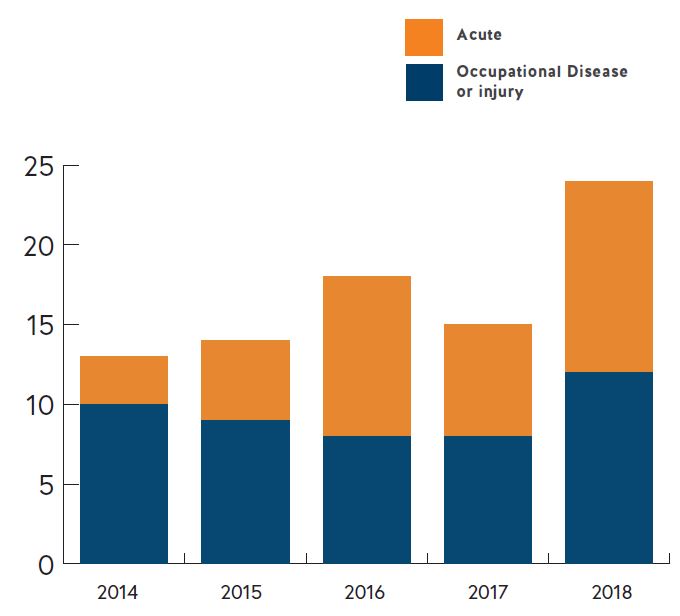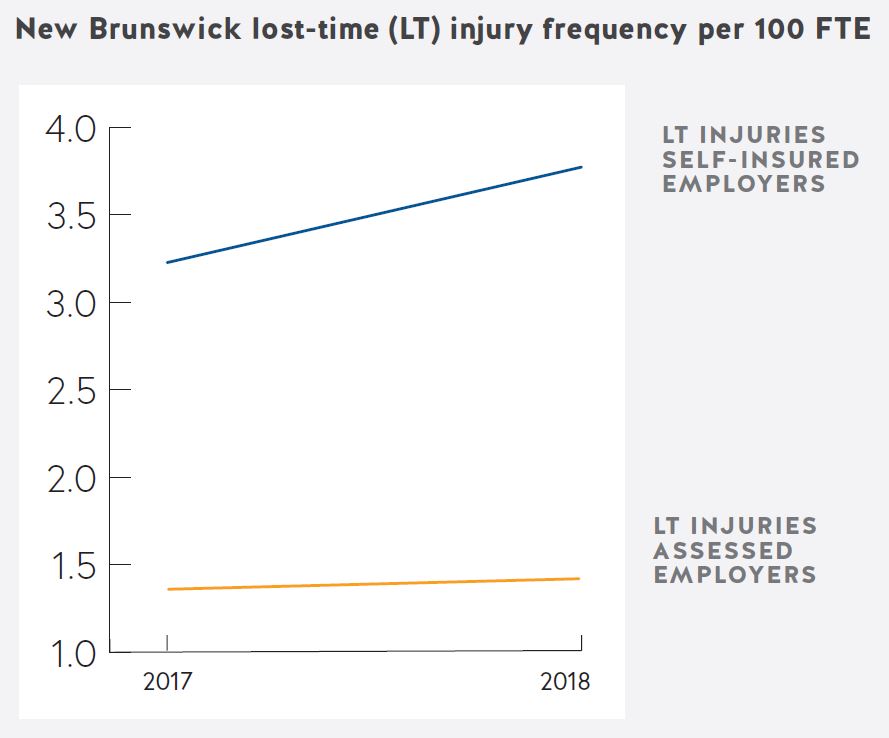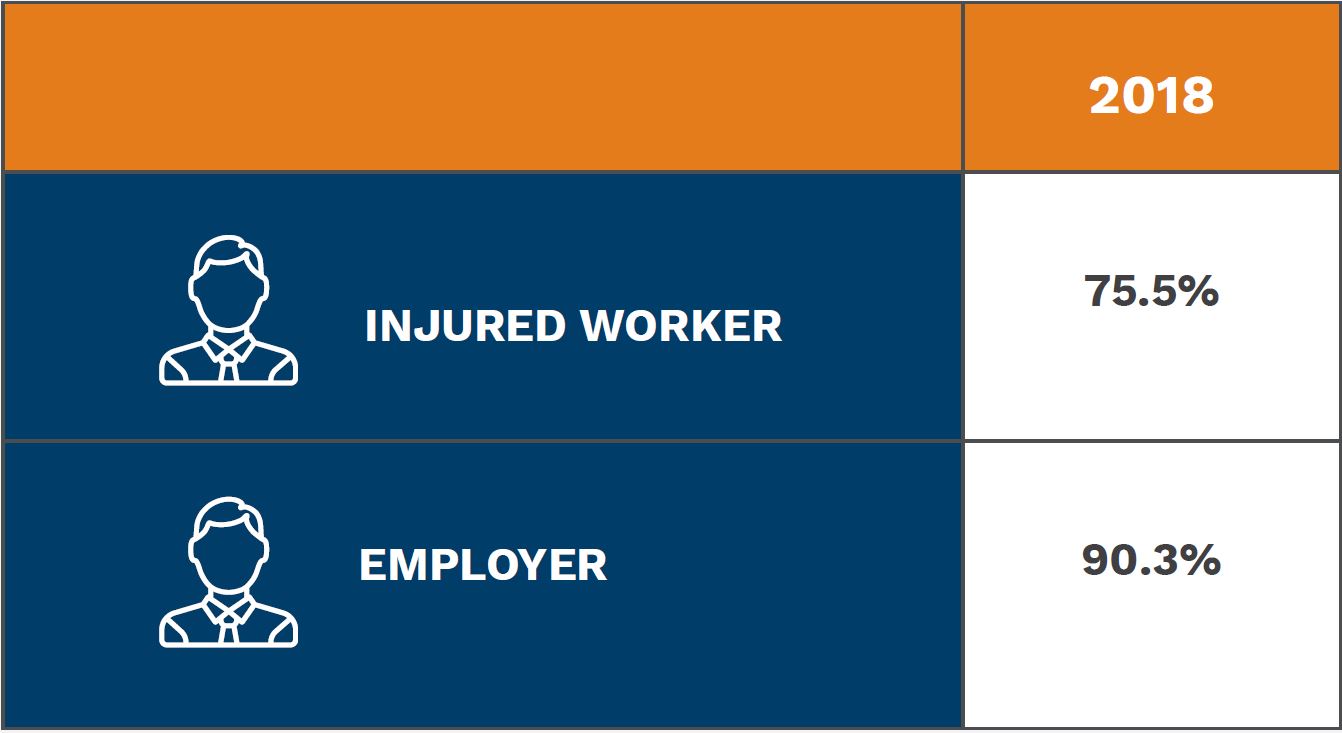

|
|
DRIVE A SAFETY-FIRST CULTURELeading health and safety prevention initiatives to keep New Brunswickers healthy and safe. |
Our ultimate priority is keeping New Brunswick workers safe at work so they can return home safely every day. We do this through: awareness building; facilitating education of the Occupational Health and Safety (OHS) Act; identifying gaps in health and safety procedures; and, referring employers to support services, all the while demonstrating and fostering safety leadership behaviours. We also focus on ensuring compliance through workplace inspections and partnering with workplaces to find solutions when health and safety hazards and risks are identified.
In 2018, we introduced a new role dedicated to health and safety prevention and education, vice-president of prevention services.
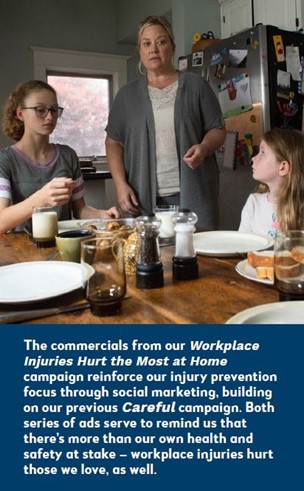
Collaboration and working closely with partners were central to our prevention success in 2018 – we partnered with our Atlantic counterparts to launch the Workplace Injuries Hurt the Most at Home campaign, aimed at reminding workers of the impacts that workplace injuries have on your home life and family. We also worked with other jurisdictions in Canada to simplify workers’ compensation systems for stakeholders doing business in other provinces.
In addition to our regular educational offerings, we provided supervisor health and safety training to 365 supervisors, in partnership with the Province of New Brunswick. We also partnered with New Brunswick Community College and Collège Communautaire du Nouveau-Brunswick to provide a health and safety mentorship program for community college students.
Engaging with our stakeholders is critical to achieving our goals. In the fall we hosted our annual Health and Safety Conference, the province’s largest event focused on educating workers and employers on health and safety and compensation. The event drew more than 600 participants from all types of industries who attended a wide variety of workshops and plenaries focused on general health and safety topics. We also hosted our first Executive Leadership Forum, attended by more than 50 senior executives from across the province. The forum focused on supporting a safety leadership culture and featured a number of knowledgeable speakers. We are looking forward to making this an annual event.
FATALITIES
In 2018, 24 New Brunswick workers died. Twelve of the fatalities reported were related to occupational diseases incurred before 2018, and the other 12 were a result of accidents occurring in 2018. Of the 12 fatalities occurring in 2018, five were a result of motor vehicle accidents, while another two were related to the particularly tragic fatality of two Fredericton police officers who were killed in the line of duty. Workplace fatalities do not discriminate based on employer size. Of the 12 acute fatalities in 2018, six occurred at medium-size employers, three at large employers, and another three at self-insured workplaces.
Every fatality is one too many and we continue to work for a New Brunswick free of workplace
accidents and disease.
SAFETY
One of the most concrete indicators of how safe New Brunswick workplaces are is the rate of injuries year over year. Over the last five years, the lost-time injury frequency for assessed employers has increased by 3%, while the rate for self-insured employers has increased by nearly 16%. This is very concerning and we are exploring all options in an effort to reverse this trend.
In 2017, provincial lost-time injury frequencies throughout Canada ranged from a low of 1.09 up to a high of 2.82. In 2018, New Brunswick had an injury frequency of 1.71 per 100 FTE for all employers, which includes a frequency of 3.68 for self-insured employers and 1.42 for assessed employers.
The typical time-loss claim is no longer the traditional injury from the past, such as a broken bone or fracture. It is most likely a soft-tissue injury, caused by lifting or perhaps even moving another person in the process of caring for them. And, it’s also increasingly likely to not be purely physical – more and more often, there are other factors related to mental health that need to be considered.
OCCUPATIONAL HEALTH AND SAFETY CULTURE INDEX
Tracking the workplace health and safety perceptions of workers and employers helps us understand New Brunswick’s current health and safety culture. To track this, through a series of questions we asked employers and workers to what degree they believe their workplace has a safe work culture.
The gap between workers and employers who believe their workplace has a strong safety culture is significant. While 2018 results show slight improvement, we must continue our safety leadership and education efforts with both groups, especially our workers, to ensure safety culture is embedded in all workplaces.
COMPLIANCE
We conducted 761 investigations in the past year, 39 of which were for serious accidents such as fatalities, fractures and any injury requiring hospital admission as an in-patient. In 2018, 14 prosecutions related to health and safety violations were completed for a total of $143,300 in fines.
 |
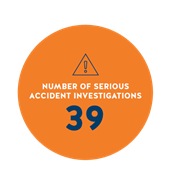 |
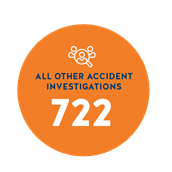 |

